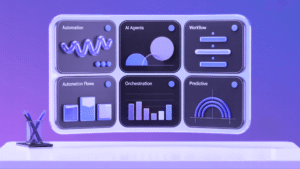In today’s highly competitive business landscape, staying ahead requires a deep understanding of media coverage and customer sentiment. Media monitoring reports come with invaluable insights for businesses, driving informed decision-making that enhances communications and marketing strategies.
In an era where data reigns supreme, accurate and comprehensive information empowers organizations to understand market dynamics, identify emerging trends, and tailor their strategies accordingly. A survey conducted by trust and consulting firm PwC has shown that organizations with data-driven approaches are three times as likely to observe notable enhancements in decision-making compared to those that depend less on data. Likewise, companies gain a competitive edge by leveraging insights derived from media coverage and customer feedback.
Media monitoring reports are a reliable compass for businesses by meticulously analyzing media coverage and customer sentiment for a holistic view of the market landscape. Through data on key metrics, trends, and patterns, companies can stay informed so they can identify and seize the right opportunities.
The Benefits of Media Monitoring Reports
1. Monitoring Public Perception
Tracking media mentions and consumer sentiment enables organizations to see how their brand is talked about versus the competition. Through the report, brands can look beyond numbers and take concrete actions on customer feedback. Having this data on hand enables companies to customize their communication strategies, address potential issues, and capitalize on positive sentiment to strengthen their brand reputation.
2. Tracking Market Shifts and Trends
The business landscape is in constant flux, and being aware of market changes is vital for companies striving to remain relevant. Media monitoring reports provide real-time insights into industry developments, competitor news, and consumer trends. With this information, businesses can align their products, services, and marketing strategies with market demands and capitalize on emerging opportunities.
3. Identifying Growth Opportunities
Media coverage analysis can support business intelligence and help organizations identify untapped markets, new customer segments, and potential partners. The resulting data will be essential in deciding whether to explore new locations or demographics, launch new products, or forge new partnerships to spur business growth.
4. Evaluating Campaign Effectiveness
Marketing campaigns are significant investments for businesses, and measuring their impact is crucial to ensure optimal resource allocation. Media monitoring reports provide comprehensive data on the reach, engagement, and sentiment generated by these campaigns, enabling organizations to gauge the effectiveness of their strategies, make data-driven adjustments, and optimize their future marketing efforts.
5. Responding to Crises and Managing Brand Reputation
In today’s interconnected world, crisis events can arise at any moment and potentially impact a company’s reputation. Sentiment analysis in media monitoring reports serves as an early warning system, promptly notifying organizations of any negative media coverage or online discussions that could harm their brand. By monitoring and analyzing these reports, businesses can respond swiftly before significant damage is done.
Analyzing media coverage and consumer sentiment has become indispensable for organizations aiming to navigate the complex and ever-changing business landscape. Through insights derived from media monitoring reports, businesses gain a strategic advantage in their marketing efforts to stay ahead of the competition.
Media Meter provides you with media monitoring services that cover real-time stories across traditional and online publications. Contact us for inquiries or view more of our sample reports.




